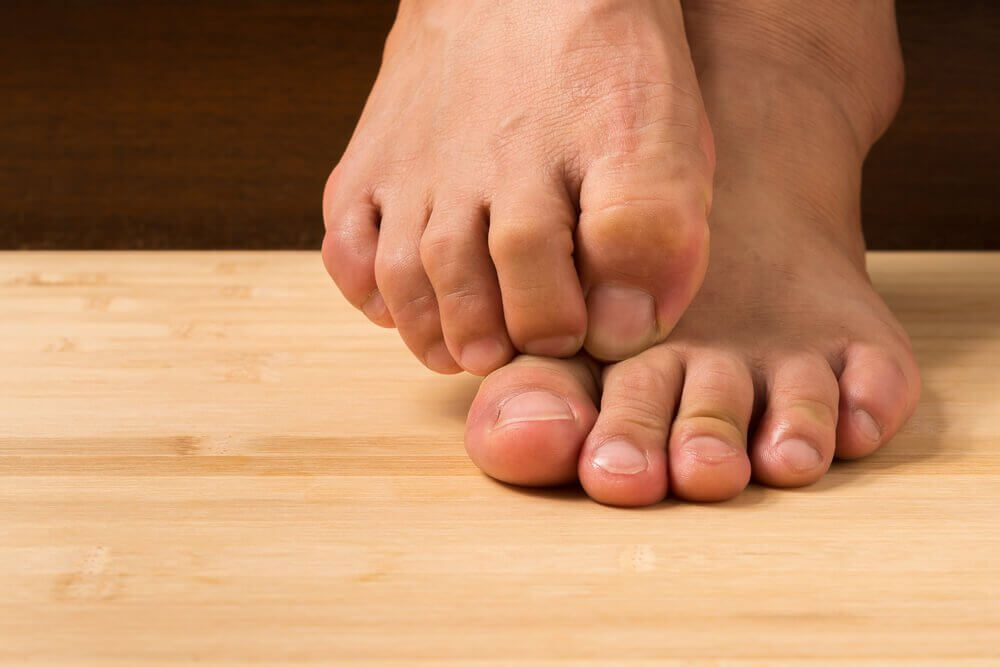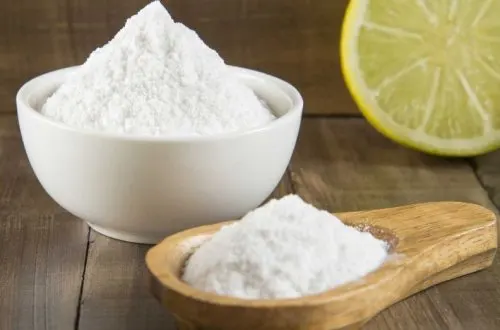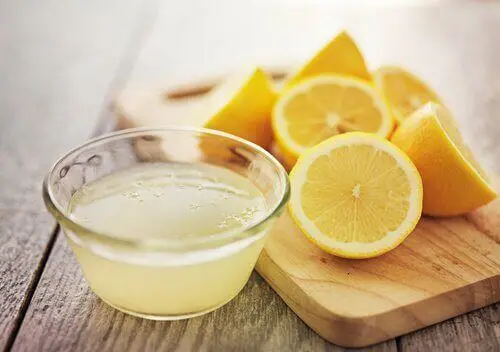7 Natural Remedies to Treat Fungi


Reviewed and approved by the pharmacist Sergio Alonso Castrillejo
The presence of fungi is one of the most annoying conditions that can appear. They are more common when some hygienic precautions are overlooked. However, in certain environments, it is normal for them to appear. That is why we bring you 7 natural remedies to treat fungi that you can easily prepare at home.
What are fungi?

Fungi are living organisms belonging to the fungi kingdom. Therefore, they’re neither animals nor plants. They have the ability to adapt to almost any surface with complete ease and to reproduce through spores. The environment contributes to spreading these spores everywhere every second.
For this reason, they can be inhaled or come into contact with the body easily, so the main organs affected are usually the lungs and skin.
However, most of them don’t affect or cause infections. This is more likely to happen in people with a weakened immune system or implanted prostheses or valves (by medical procedure).
They usually affect the skin, nails, genitals, or mouth and rarely spread from person to person. Their most common symptoms are as follows:
- White, red, or brown spots on the skin
- Tingling and irritation of the skin
- Athlete’s foot: cracking, pain, and itching between the toes
- Nail fungus: thickening, color changes (white, yellow, or brown), brittleness, flaking, and an unpleasant odor
- Genital fungus: Itching, pain, inflammation, and redness
We think you may also enjoy reading this article: Remedies for Fungi: How to Cure Them With Natural Ingredients
How to treat fungi naturally
When a fungal infection occurs in the body, it must be treated. The presence of fungi in nature is normal, but in the body, it can mean infections or major problems.
Although there are mycoses that should only be treated under strict medical supervision, some home remedies can help us to complement the indicated treatment. In this article, we’ll present seven of them, which you can do easily, quickly, and cheaply.
1. A white vinegar bath for fungus
White vinegar is a substance that has many benefits for various body purposes. Its astringent properties have the ability to get rid of the presence of spores progressively. It’s just necessary to repeat the application frequently. However, it’s also important to note that the evidence for its effectiveness is only anecdotal.
Ingredients
- 200 milliliters of vinegar
- 500 milligrams of salt
- 20 grams of aromatic flowers
What should I do?
- Pour the vinegar, salt, and aromatic flowers into a container.
- Wait until it’s well diluted.
- Put the affected area in the mixture or moisten handkerchiefs with the substance.
- Rub the area where the fungus is.
- Repeat the procedure at least three times a week.
2. A baking soda ointment for fungi

Baking soda has superb antifungal and antibacterial qualities, not to mention its value in preserving the beauty of the skin. Using an ointment of this compound will not only help you eliminate fungus, but will also serve as an exfoliant.
Ingredients
- 2 tablespoons of baking soda
- 100 milliliters of water
What should I do?
- Mix the water with the baking soda until you get a kind of paste.
- Apply to the affected area and rub for a few minutes.
- Rinse with plenty of water and repeat at least four times a week.
We think you may be interesting in reading this, too: Can Nail Fungi Cause Pain? Find Out How You Can Fight It
3. A salt bath to treat fungi
People often associate salt baths exclusively with a relaxation technique. However, this can be one of the best tools to get rid of a fungus. Salt contributes to the removal of dead skin, a frequent reservoir of fungi.
Ingredients
- 200 grams of salt
- 2 liters of water
What should I do?
- Mix the water and salt until the mixture is completely diluted.
- Soak the affected areas for approximately 20 minutes.
- Rinse with plenty of water.
- Repeat at least 3 times a week.
4. Lemon juice

Another of the most effective substances for removing fungus is lemon. Its astringent qualities prevent the reproduction of spores. In addition, they eliminate the cracking caused by microorganisms.
Also, lemons (and citrus fruits in general) contain flavonoids. These substances have been successfully investigated in recent years for their antifungal properties.
Ingredients
- 1 lemon
What should I do?
- Extract the lemon juice.
- Apply to the affected areas with the help of a cotton pad. You can also cut the lemon in half and rub it on the injured areas.
- After about 10 minutes, rinse the area with plenty of warm water.
- Repeat this procedure at least 3 times a week.
**When applying this remedy, make sure to be careful to avoid sun exposure, as spots may appear on the skin.
5. Tea tree oil to treat fungi
Tea tree oil is one of the most common remedies for the treatment of skin and nail fungus. It has important antiseptic and antifungal properties, so it has the ability to eliminate fungus in very short periods of time.
Ingredients
- Tea tree oil
- Almond, coconut, or olive oil (as a carrier oil)
What should I do?
- Tea tree essential oil should be applied through a carrier oil. Mix a tablespoon of it with two or 3 drops of the essence.
- Apply with the help of a dropper or absorbent cotton to the affected area at night before bed.
- Cover with a cloth.
- Let it soak in until the next day and then rinse.
6. More essences to treat fungi: Neem oil
This essential oil, less known than tea tree oil, also has antifungal properties and has been traditionally used to treat various skin conditions.
What should I do?
- The simplest way to use it is through the essential oil, always applied together with a carrier oil.
- It should be used 2 to 3 times a day until you notice an improvement in skin or nail fungus.
7. Ozonized oil
The health benefits of olive oil are well known. On the other hand, its possible dermatological applications are less well known. However, it has a preventive effect on burned skin infections and a proven antifungal activity.
Moreover, in recent years it has become known that these properties can be reinforced by adding ozone. For these therapeutic purposes, it’s possible to find some products with ozonized oils that can be applied to improve skin or nail fungus.
Final considerations to treat fungi

In addition to the treatments we apply, we must also consider new hygienic habits to prevent fungus.
By modifying some of our hygiene habits, we can prevent the appearance of fungi and even treat it in our body. Some of these measures include keeping the skin clean and dry, wearing loose clothing made of natural fibers, using flip-flops in public showers and swimming pools, and practicing safe sex with protection.
However, once fungus appears, treating it with natural remedies should be complementary to the treatment indicated by the doctor.
Some fungi adhere so strongly to the surface that they go beyond the epidermis. This makes it necessary to resort to more penetrating antifungal treatments than homemade remedies. Keep in mind that medical fungal treatment and home treatment are never mutually exclusive.
Finally, it’s also important to know that the use of essential oils is not indicated for pregnant women, nursing mothers, and young children. If the area to be treated is the genitals or is close to the mouth, eyes, or nose, its important to apply any of the remedies more carefully.
All cited sources were thoroughly reviewed by our team to ensure their quality, reliability, currency, and validity. The bibliography of this article was considered reliable and of academic or scientific accuracy.
- Al Aboody M.S, Mickymaray S. Anti-fungal efficacy and mechanisms of flavonoids. Antibiotics Febrero 2020. 9 (2): 45.
- Johnston C. S, Gaas C. A. Vinegar: medicinal uses and anti glycemic effect. Medscape General Medicine. Mayo 2006. 8 (2): 61.
- Letscher-Bru V, Obszynski C. M, et al. Antifungal activity of sodium bicarbonate against fungal causing superficial infections. Mycopathologia. Febrero 2013. 175 (1-2): 153-8.
- Mahmoud D. A., Hassanein N. M, et al. Antifungal activity of different neem leaf extracts and the nimonol against human pathogens. Brazilian Journal of Microbiology. Julio-Septiembre 2011. 42 (3): 1007-116.
- Martinez Roig, A. (n.d.). Documento de consenso SEIP-AEPap-SEPEAP sobre la etiología, el diagnóstico y el tratamiento de las infecciones cutáneas micóticas de manejo ambulatorio. Pediatría Atención Primaria. Octubre-Diciembre 2016. 18 (72).
- Mayo Clinic. Tea tree oil. Noviembre 2020.
- Revankar S. J. Introducción a las infecciones por hongos. Manual MSD. Abril 2021.
- Sánchez-Saldaña, L., Matos-Sánchez, R., & Kumakawa Sena, H. (2009). Infecciones micóticas superficiales. Dermatología Peruana, 19(3).
- Ugazio E, Tullio V, et al. Ozonated oils as antimicrobial systems in topical applications. Their characterization, current applications, and advances in improved delivery. Molecules. Enero 2020. 25 (2): 334.
This text is provided for informational purposes only and does not replace consultation with a professional. If in doubt, consult your specialist.








